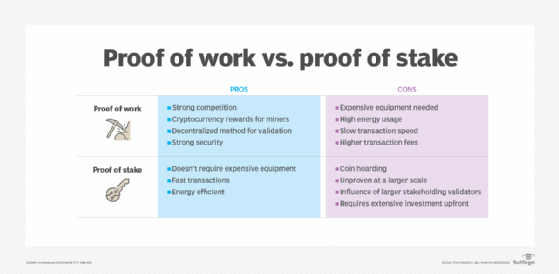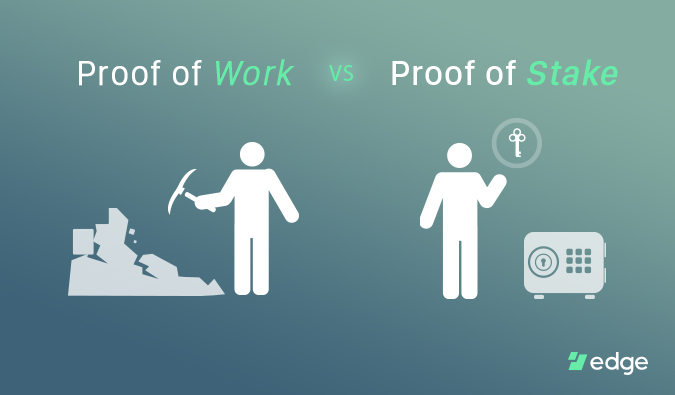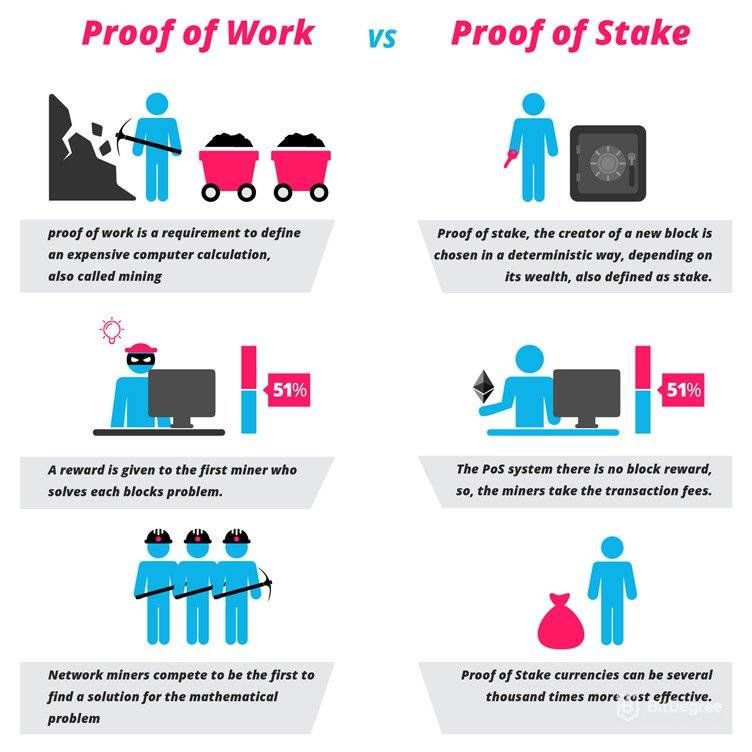
Proof-of-work and proof-of-stake are two different methods to validate transactions on a blockchain network. · Both methods use a consensus algorithm to ensure. The main difference between proof of work and proof of stake is that proof of stake relies on crypto staking, while proof of work relies on.
The key difference between the two is how they validate transactions and create new blocks. PoS relies on crypto staking, while PoW relies on solving complex.
 ❻
❻For example, the first cryptocurrency, Bitcoin, has operated on proof of work since it launched in As of Mayit has run for over a. In contrast, Proof-of-Stake miners put up digital coins for the right to validate new block transactions.
 ❻
❻Server Room Series. ty cgi stock/.
Qual é a diferença entre Proof-of-Work e Proof-of-Stake?What is Proof-of-Work (PoW)? Proof-of-Work (PoW) is the consensus mechanism originally deployed by Bitcoin and later adopted by Ethereum. In a.
Quick Links
While the Bitcoin network functions on the Proof-of-Work consensus, there are other mechanisms — mainly Proof-of-Stake — being developed and implemented.
Energy vs security With proof of work, it's the energy used by miners that secures the blockchain.
🚨 Quais as MELHORES ALTCOINS para INVESTIR? POLYGON MATIC pode fazer 10x? - Orlando on CryptoProof of stake requires far less energy by. While Proof-of-Work provides stronger security, higher decentralization, and has a proven track record, Proof-of-Stake offers a more energy.
 ❻
❻Proof of Work is used in Bitcoin to validate transactions and secure the network. Apart from other things, PoW prevents double-spending. The. Bitcoin; Dogecoin · Bitcoin Cash; Litecoin; Monero.
Proof of Work vs Proof of Stake.
Proof of Work VS Proof of Stake in Blockchain
Proof of work and proof of stake are two different. Proof of Work is better suited for establishing trust in a distributed system, while Proof of Stake is better suited for reducing the cost of.
Whereas proof of work is essentially a math race between super-fast computers, proof of stake requires validators to prove the size of their. Understanding Proof of Work (PoW).
Proof-of-Work vs. Proof-of-Stake: Why did Ethereum Switch to Proof-of-Stake?
PoW relies on miners solving complex mathematical puzzles to validate transactions and create new blocks. the similarities between the two PoW and PoS are that they are consensus-driven algorithms.
 ❻
❻They are designed to reach an agreement between the systems in place. For example, it is estimated that a proof of work network like Bitcoin consumes over 99% more energy than proof of stake networks like Tezos, Polkadot, or.
 ❻
❻Did you know that the core principle of Proof-of-Work is competition, while the core principle of Proof-of-Stake is luck?
share. medium.
 ❻
❻13 minutes. On the other hand, Proof of Work sees crypto users solve intricate cryptographic mathematical equations through computer power. We get it. For a. Proof of Stake is a newer and unproven consensus mechanism that has been proposed as an alternative to Proof of Work consensus to solve the scalability and cost.
It is very a pity to me, I can help nothing to you. But it is assured, that you will find the correct decision.
And indefinitely it is not far :)
Thanks for an explanation. I did not know it.
In it something is. Thanks for the help in this question. I did not know it.
I apologise, but, in my opinion, you commit an error. I can defend the position.
Matchless phrase ;)
I thank for the information, now I will not commit such error.
You are not right. I am assured. I suggest it to discuss.
I think, that you are not right. I suggest it to discuss. Write to me in PM, we will communicate.
Willingly I accept. In my opinion, it is actual, I will take part in discussion. I know, that together we can come to a right answer.
The matchless message ;)
Where the world slides?
I apologise, but, in my opinion, you are not right. Write to me in PM, we will talk.